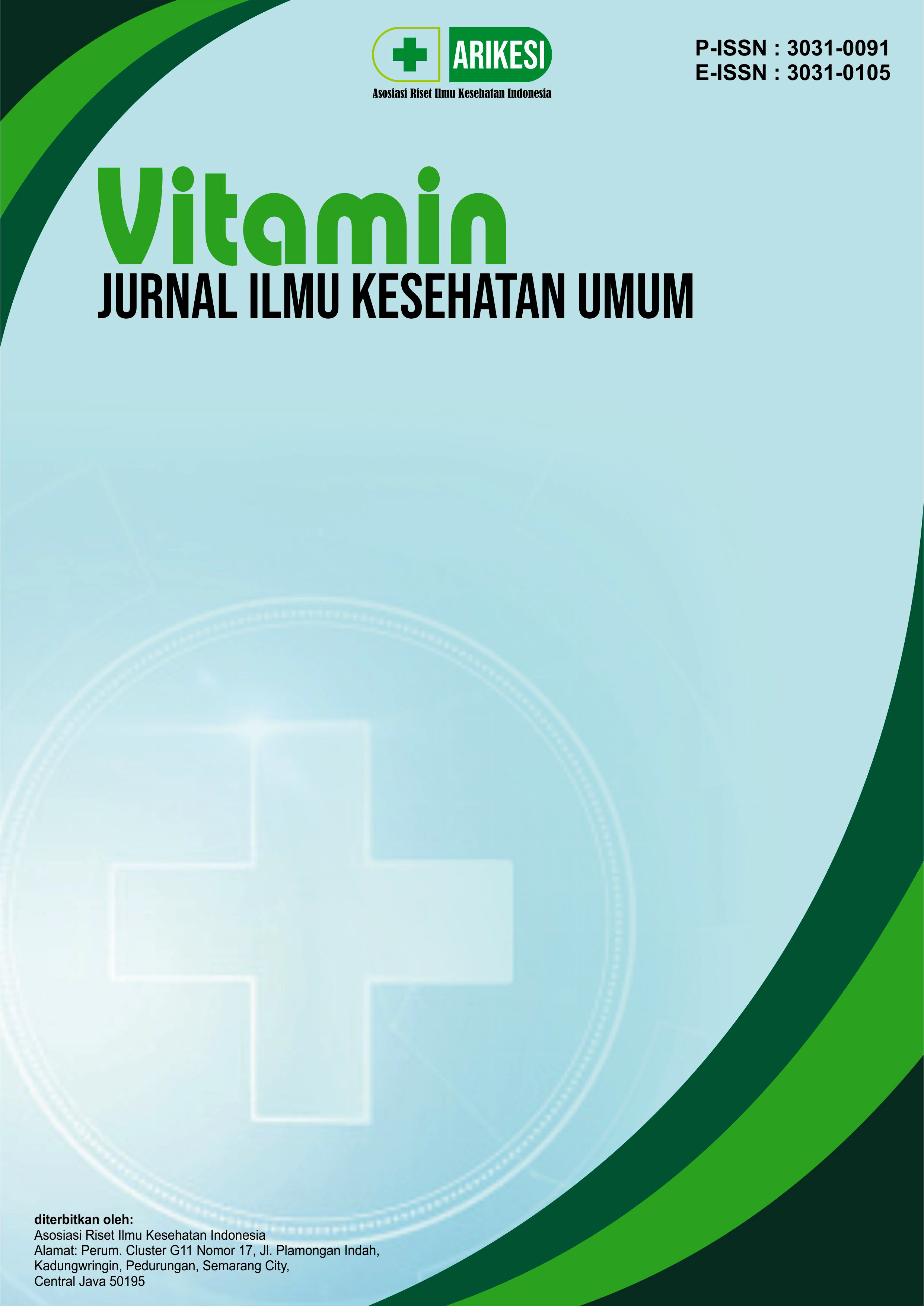Pedikulosis Kapitis Disertai Ektima pada Seorang Perempuan Usia 17 Tahun
DOI:
https://doi.org/10.61132/vitamin.v3i3.1405Keywords:
Pediculosis Capitis, Pruritus, Eczematous Lesions, Permethrin, Secondary InfectionAbstract
Pediculosis capitis is an infestation of head lice Pediculus humanus capitis that live on the scalp and suck blood as a source of nutrition. Transmission occurs through direct contact or sharing personal items, especially in environments with poor sanitation. Risk factors include age, population density, personal hygiene, and socioeconomic status. Symptoms include severe itching due to a reaction to the saliva of the lice, which can cause excoriation, irritation, and secondary infections such as pyoderma. In this report, a 17-year-old girl complained of scabs, pain, heat, and itching on the head and neck. Lice and lice eggs were found, as well as ecthyma lesions in the form of pustules, yellow crusts, and excoriations in the occipital area and back of the neck. The therapy given was a combination of drug and non-drug treatment. The evaluation results showed improvement in symptoms. This case emphasizes the importance of early diagnosis and comprehensive management to prevent reinfection.
Downloads
References
Centers for Disease Control and Prevention. (2023). Head lice treatment and control. CDC. https://www.cdc.gov/parasites/lice/head/treatment.html
Fitriani, S. (2023). Sanitasi Lingkungan dan Penyebaran Pediculosis Capitis di Asrama. Jurnal Kesmas Aceh, 8(1), 40–46.
Garcia, L., & Martin, S. (2021). Mechanisms of second-generation antihistamines in allergic reactions. Journal of Clinical Pharmacology, 61(4), 456-465. https://doi.org/10.1002/jcph.1789
Ginting, H., et al. (2022). Reaksi Imun dan Limfadenopati pada Infeksi Kulit Kepala. Jurnal Patologi Klinik, 11(2), 88–95.
Johnson, M., & Lee, H. (2021). Wet combing for pediculosis capitis: effectiveness and compliance. International Journal of Dermatology, 60(2), 210-215. https://doi.org/10.1111/ijd.15203
Kartono, D., et al. (2022). Pediculosis Capitis: Diagnosis dan Tatalaksana. Jurnal Kedokteran Tropis Indonesia.
Nasution, R. A. (2021). Infeksi Sekunder Akibat Pediculosis Capitis. Jurnal Ilmiah Medika UIN, 10(1), 14–20.
Nguyen, T., Carter, S., & Miller, R. (2022). Macrolide antibiotics: mechanisms of action and clinical applications. Microbiology Spectrum, 10(1), e01807-21. https://doi.org/10.1128/spectrum.01807-21
Putri, N. L. (2021). Infestasi Kutu Kepala dan Risiko Infeksi Sekunder pada Santriwati. Media Medika Muda, 6(3), 23–30.
Roberts, J., Smith, P., & Wang, Y. (2020). Nonsteroidal anti-inflammatory drugs: selective COX-2 inhibitors. Pharmacological Reviews, 72(1), 34-56. https://doi.org/10.1124/pr.119.017438
Sari, N. A., Hidayah, R., & Prasetyo, D. (2022). Komplikasi kulit akibat infestasi Pediculus humanus capitis pada anak sekolah dasar di Indonesia. Jurnal Dermatologi Tropis, 5(2), 45–51.
Smith, J., et al. (2022). Diagnosis and management of pediculosis capitis: a clinical review. Dermatology Clinics, 40(3), 381-391. https://doi.org/10.1016/j.det.2022.03.005
Suwarsa, O., et al. (2019). Ilmu Penyakit Kulit dan Kelamin. FKUI Press.
Widiyastuti, L., et al. (2020). Morfologi dan Daur Hidup Pediculus Humanus Capitis. Jurnal Biologi Tropis, 18(2), 134–142.
Widyastuti, S., Ramadhani, D. M., & Putri, A. A. (2021). Faktor-faktor yang berhubungan dengan kejadian pedikulosis kapitis pada anak usia sekolah dasar di wilayah tropis. Jurnal Kesehatan Masyarakat, 9(1), 12–19.
World Health Organization. (2020). Head Lice Infestation: Epidemiology and Management. Geneva: WHO Press.
Downloads
Published
How to Cite
Issue
Section
License
Copyright (c) 2025 Vitamin : Jurnal ilmu Kesehatan Umum

This work is licensed under a Creative Commons Attribution-ShareAlike 4.0 International License.





